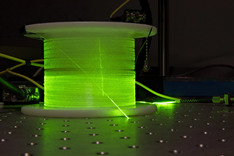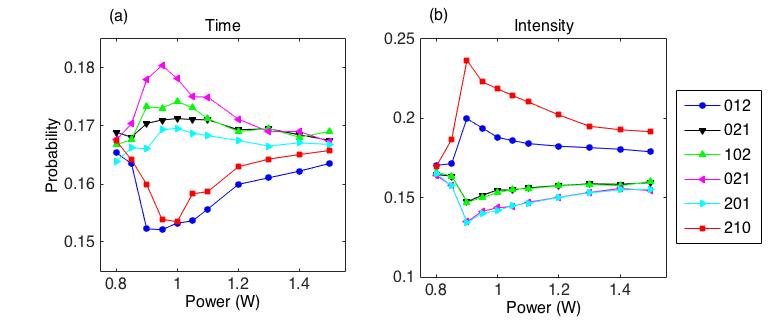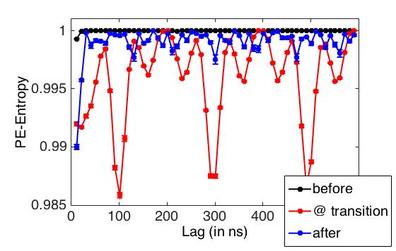 Fibre spool. Fibre spool. The journal Physical Review Letters publishes this month my last paper in complex dynamics in optical systems: “Unveiling temporal correlations characteristic of a phase transition in the output intensity of a fiber laser”. This work is in collaboration with scientists from Spain [1], UK [2] and Russia [3]. In it, we unveil underlying correlations and time-scales in the intensity fluctuations of a fiber laser in its transition to a turbulent regime. Fiber lasers are widely used in industry, and very attractive due to their high gain, high output power or high optical quality. But wave dynamics in fibre lasers is highly complex as result of the non-linear interaction of millions of elements. Recently, the group of Aston University (the lab. of Sergei Turitsyn) found similarities between this type of laser and fluids. They showed the analogy between optical regimes in fiber lasers and the transition from a laminar to a turbulent regime in hydrodynamics. We have applied complex dynamics techniques to study this transition and we reveal clear correlations in time and in laser intensity. We have identified temporal structures that evolve with, and characterize the transition between the two dynamical regimes. These techniques are shown to be powerful tools and can also be used to study high-dimensional complex systems that undergo similar transitions.  Probabilities of six different temporal (a) and intensity (b) patterns that evolve as the pump power of the laser varies from 0.8 Watts to 1.5 Watts. The transition is at 0.9 Watts. If the dynamics was stochastic, random, all six patterns should be equally probable. Right around the transition we see how the behavious is more deterministic, more structured. he result of our research helps us understand the laminar to turbulent transition, present in fiber lasers but also in fluids, such as a liquid in a pipe. We have also found a more structured behaviour right at the transition than in the laminar or turbulent regimes. This helps understand the flow of fluids at the transition, which will help for fluid transport purposes (water in a tube, gas in a pipeline or light in an optical fiber). We have also found characteristic intrinsic time scales where the system shows random behaviour and time scales with a more structured behaviour. This will be useful in long distance telecommunications, one of the applications of this type of lasers. This time scales could point out interesting frequencies for transmission. Our work helps understand better light-matter interactions in these lasers, which are very complex as millions of laser modes interact, due to their very long cavity. This work can also help to verify and/or improve models used to capture the essence of the transition, and to estimate the model parameters for this type of lasers. There are still some aspects to understand in these systems, such as the origin of the intrinsic time scales, and what type of nonlinear interactions created pulses with this dynamics. [1] Universitat Politecnica de Catalunya (Laura Carpi, Carme Torrent and Cristina Masoller) [2] Aston University (Sergei Turitsyn, Nikita Tarasov and Dmitry Churkin) [3] Novosibrisk University (Nikita Tarasov and Dmitry Churkin)
0 Comments
|
Andrés AragonesesPhysicist, working in quantum optics and nonlinear dynamics in optical systems. Loves to communicate science. Archives
January 2018
Categories |

 RSS Feed
RSS Feed
